Nicaragua has always been a predominately Roman Catholic society. It is interesting to see the rise of the Evangelical Christian Church and its impact on some of the Nicaraguans who have converted from Catholicism to more conservative Christian churches. Despite a growing number of converts from Catholicism to conservative Evangelism the history of the Roman Catholic Church in Nicaragua will always play a pivotal role in the culture of Nicaragua. For example, every city and town in Nicaragua has their own patron saint. In many cases, the patron saint might be the name of the town (for example my training town-St. Teresa or my current site San Isidro), or if the name of the town is not a saint then there is always a chosen saint somehow promulgated from the history of the town. In San Isidro, the patron saint is Isidro, for whom the town is named. This saint is known as “Saint Isidro the Laborer” in recognition of the strong agricultural influence that is the basis of the rural “campo” habitants of the municipality of San Isidro. In San Isidro they farm rice, corn, beans, and grains. Once a year Nicaraguan towns celebrate and honor their patron saint in a 17 to 21 day event called “Fiestas Patronales” (Patron Saint Festivities). In every town this epoch of fiestas varies depending on the day the patron is celebrated. In San Isidro, it is celebrated in the middle of May with the principal Saint Day on May 15. During these two to three weeks of fiestas a fair is put up in a temporary location that includes a ferris wheel, a merry-go-round, other amusement park rides as well as a temporary arena/stadium where the riding of the bulls occurs. I have put a few of the notable pictures on my Picasa web album on Google and more on Facebook. Every weekend there is a riding of the bulls, where as many as 10 bulls are rode in one night. During the weekdays for three days during this period of festivities, younger adolescents get to ride baby bulls or calves. The bull riding area (barrera) is mostly a place to socialize as well as get a bit of non-traditional entertainment from bull riding (if that turns your crank, for me personally, I do not get any enjoyment from watching bull riding). There is also a horse race, but very informal as well where two lanes are marked in chalk in a straight area of dirt about the length of half a football field. Then bets are placed on the horse and horse rider (who rides bareback) who will cross the finish line first. Also part of the festivities includes two parades. One parade on the principal day of the Patron Saint, with a float that carries the icon of the saint, as well as other floats in the parade to commemorate the Virgin Mary and other saints from neighboring municipalities. The second parade occurs on a Sunday to put a conclusion on the entire epoch of that year’s festivities. This second parade is called “Hipico” because cowboys with their horses on horseback come from all parts of the rural country to celebrate their municipality’s saint.
Another important holiday that happens once a year in Nicaragua is Nicaraguan Mothers Day. This year it was Sunday May 30. For this holiday the schools are given a 4 day weekend and many stores and services are not open during these days. In Latino culture the mother plays a very important role in the family structure because it is the mother who predominantly is in charge of raising the children and taking care of the home, where as the father is in charge of working and bringing home the salary for the home. Where I live the mother and owner of the house lives in Miami and was not able to come down to celebrate with her two sons for mother’s day. Instead her sister and brother-in-law came down to celebrate Nicaraguan Mothers Day with their two nephews. This was a very happy and busy time for the family and our house because the aunt and uncle comes down about two to three times a year not only to visit with their Nicaraguan relatives but also to check and monitor there farms and properties, which they have invested in and are owners of. This is a very common situation for the majority of Nicaraguans, having direct remittances or money transfers or gifts from relatives in the states. This is the second time since I have been living with this second host family that the aunt and uncle have come from Miami. In both trips they bring the maximum checked baggage (2 per person) allowance and each is packed full with gifts for friends and family in Nicaragua. In Nicaragua the term “cousin” or “brother or sister” is used more loosely or informally than in the U.S. Here there are many “cousins” that in reality are not family at all but are good family friends and these family friends end up receiving benefits such as remittances (direct or in-direct) when “family members” are in the states or when they come back to visit in Nicaragua. This is the reality of living in a developing country that is economically dependent on a developed country or countries aid for their people’s economic and societal well-being.
Click here to View Photos
Sunday, June 6, 2010
Subscribe to:
Post Comments (Atom)



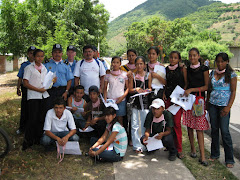


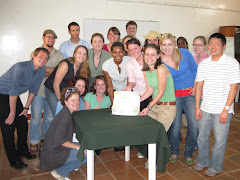
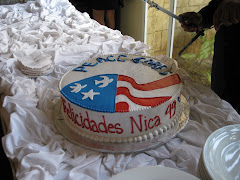
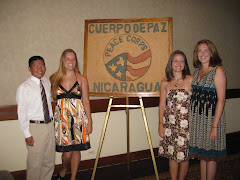
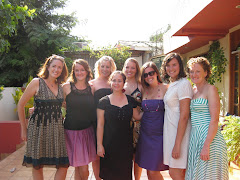

No comments:
Post a Comment